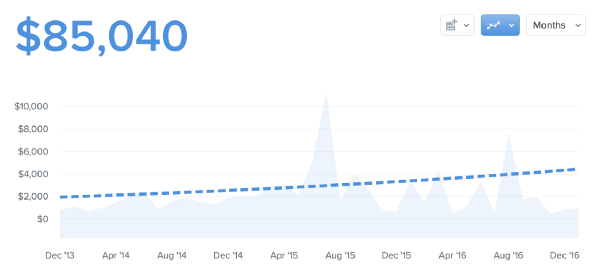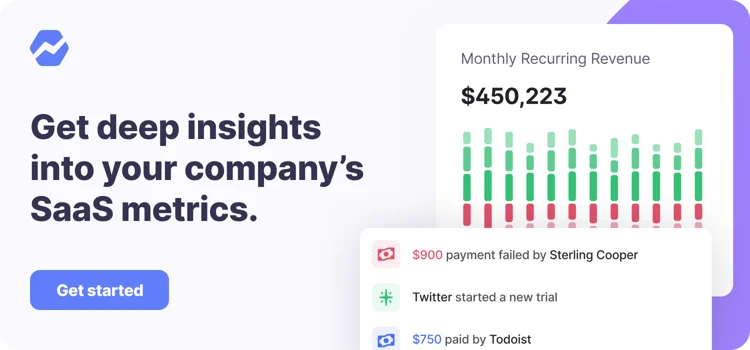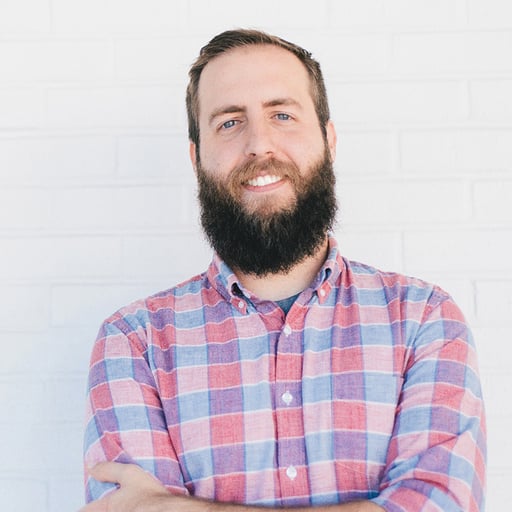Table of Contents

The life of a startup is often reactive rather than proactive. We scale infrastructure only when the current setup is bursting at the seams. We react to running out of money at the absolute last minute (or sometimes many minutes after the last minute). And we often heed the advice of Basecamp and hire less and hire later.
It took an out of control support load and a crazy long response time for our founder to realize it was time to hire a dedicated support person.
In hindsight though, the job I was hired for was not what I wound up doing. I was hired to be a ticket monkey, with a little sticker mailing and tweeting on the side. And for the first six months or so, that’s what I did.

Response time BK (Before Kaegan, also Burger King 🍔)
Support was hat #1, but it turned out Baremetrics needed some other things even more. We needed to focus on the entirety of the customer journey. Big companies have a team of folks focused on each step along the way, but smaller startups like Baremetrics don’t have that luxury.
We had to help leads understand the product, educate new customers, keep people engaged, and help guide the future direction of the product. None of that was in the job description.
Much like a fullstack developer who can handle everything from HTML to database queries, I needed to become a fullstack customer journey person human man (title still in progress).
So how do you transition from doing customer support to someone who focuses on the full picture of customer success? And how does a founder find someone to fill this role? How do you wear so many different hats?
Invest in great documentation
Take a couple of days and really build out your help documentation. Doing so requires a bit of pain up front, but will provide a number of advantages into the future.
- If you’re new to the job, you’ll get a good grasp of the product you’re supporting by having to write documentation for it.
- When folks write in with questions, you can send them the appropriate help docs, which both saves you and time and shows the customer where to find help next time.
- Customers will find answers on their own, saving you time. Yes!
Hat #2: Technical Writing
Narrow the funnel
About 50% of all our trial signups never connect a data source or contact us, which tells us they signed up for Baremetrics, realized it wasn’t for them, and went back to watching cat videos.
Two years ago we didn’t have a free plan or a free trial. Potential customers had to decide based on our marketing page and demo whether or not to sign up for Baremetrics. That led to a lot of folks signing up, asking me a ton of questions, only to have to cancel because it wasn’t the right fit.
Oh, and we also had a 60 day money back guarantee. So we processed a lot of refunds. As we’ve grown from $0 to over $60K MRR, our refunds have stayed mostly flat thanks to moving to offering a free trial.

If you find that you’re helping a lot of folks who ultimately aren’t the right fit for your product, try narrowing the funnel. Offer a free trial, add a FAQ section to your marketing page, or even lead with demos as our friends at ConvertKit have done. Whatever works best for you.
Hat #3: Conversion Optimization
Proactive customer education
15 minutes now can save you a ton of time down the road. We employ a variety of tactics to educate new and existing customers on Baremetrics to save time down the road.
Demos
Offering a 1:1 or group demo is a great way to create the ideal customer. During my demos, I answer common questions, show off the most popular features, and show folks where to get help if they have questions.
Not only does this create more independent customers, we’ve found that folks on a trial who attend a demo are about 2–3x more likely to signup. Nice!
Hat #4: Sales
Automated User Onboarding
Two years ago when someone signed up for Baremetrics they got a welcome email and that was it. They were left alone to discover Baremetrics on their own and decide if it was a worthwhile investment.
Today, we utilize Intercom to send a combination of emails and in-app messages to educate and increase engagement.
My advice to you, dear overloaded support person? Make yourself a cup of tea (or if you’re like me, pour a glass of wine) and spend an evening setting up an educational email series. You’ll thank yourself later.
Hat #5: Education
Fix the product
This is a tough one. Sometimes you’re so heads down building, fighting fires, and responding to support tickets that you miss the big picture.
Back in 2015, I began to realize we had a problem. Customer after customer was asking why the numbers were the way they were. Sometimes, I was able to make sense of it. But more often than not my answer was a big ol’ ¯_(ツ)_/¯ with lots of niceties piled on top to try to keep people happy.
Then one day I decided to be proactive and run an NPS survey. The results? Not great. The overwhelming sentiment was that though folks liked the product, the lack of transparency into the numbers left them frustrated.
So what did we do? At first, not a whole lot. Coming to the realization that we had to essentially start over was not an easy pill to swallow, and for weeks we as a team debated what to do next.
Eventually though, we completely changed how we calculate metrics and gave folks a new view into the underlying calculations via a breakout feature.
I have no doubt in my mind that had we not made this change, Baremetrics would not be in business today.
You probably have something like this at your company. Maybe not on the same scale, but there’s undoutbedly something that comes up time and time again in support tickets and cancellations.
Our advice? Fix it now. It’s only going to become a bigger and bigger problem as you grow (or worse, don’t grow).
Hat #6: QA and Product Development
This all sounds great. What do I do now?
If you’re the lone support person at a startup, branching out can seem overwhelming. It certainly was for me.
Start by asking yourself, “What is causing me the most pain?” and work from there. Going back to the Basecamp article I mentioned at the top:
Can you solve the problem with a slice of software or a change of practice instead?
Getting asked the same question a lot? Add it to your user on boarding. Replying manually to every NPS survey response? Automate it with Zapier.Huge increase in cancellations? Remove self-serve cancellation for a while and get some feedback.
*For a founder looking to find their own fullstack customer journey person human, the task can seem daunting. You’re basically looking for one person who can wear 10 different hats.
The trick is to not to look for technical expertise necessarily. That can be taught. Heck, if I can go from nearly failing high school math 10+ years ago to knowing *all the things about SaaS metrics, most anyone will be able to understand the ins and outs of your product with time.
You’re after someone with strong written and verbal communication skills and a desire (and proven ability) to learn new things.
How do you find that person? There’s no easy answer, but here are a few questions you can ask during the interview process.
- If you could change one thing about support at your current job, what would it be?
- What was the last thing you learned how to do, and how did you go about learning it?
- We expect to double or triple our customer base over the next year without hiring anymore support folks. How would you prepare for that?
- Explain Monthly Recurring Revenue [insert your own jargon here] to your grandmother.
Closing thoughts
In the past two years we’ve nearly quadrupled our customer base. If it weren’t for the early investments in documentation, on boarding, and product improvements, we would be up 💩 creek.
Undoubtedly we’ll need to expand our success team eventually, but by focusing on the full picture of a customer, their success and not just supportingthem, we’ve been able to stretch our resources much further than the average startup.
Hat #7: Helping businesses grow.



